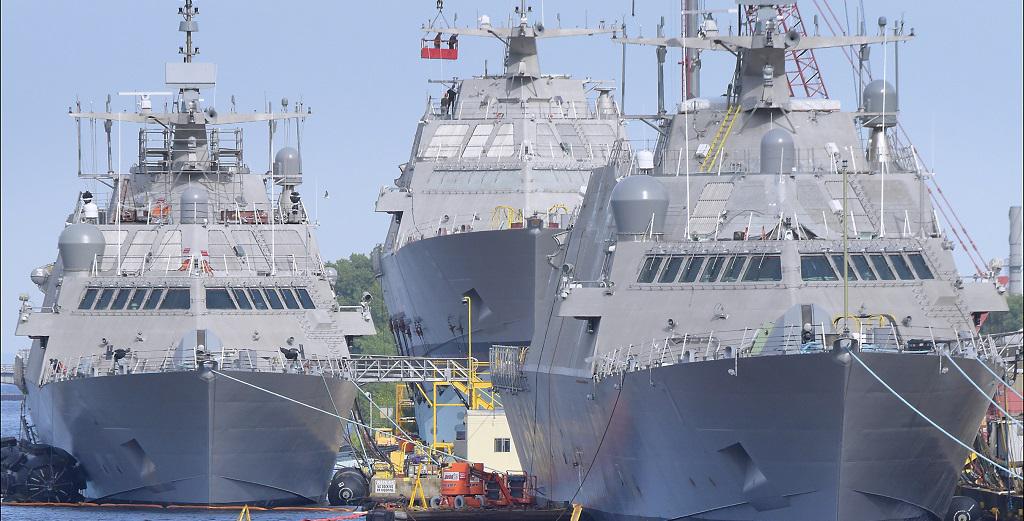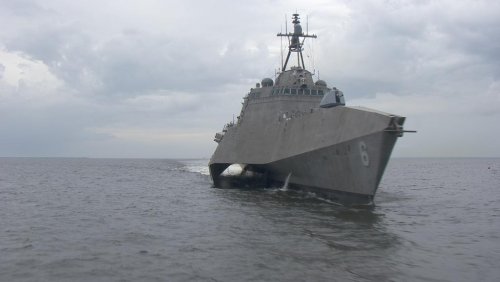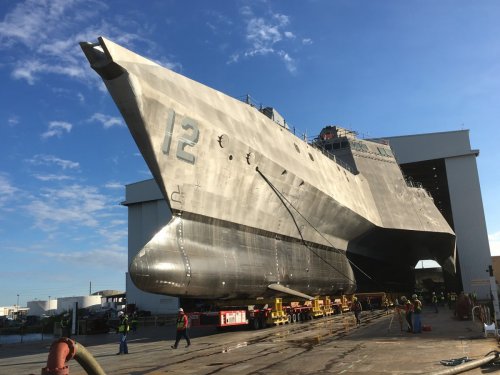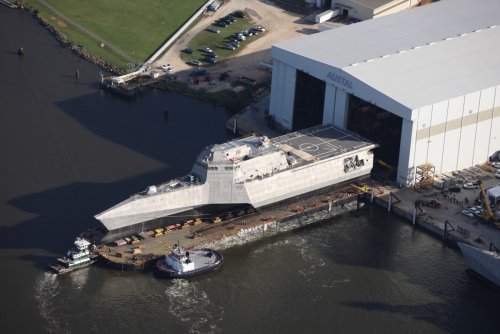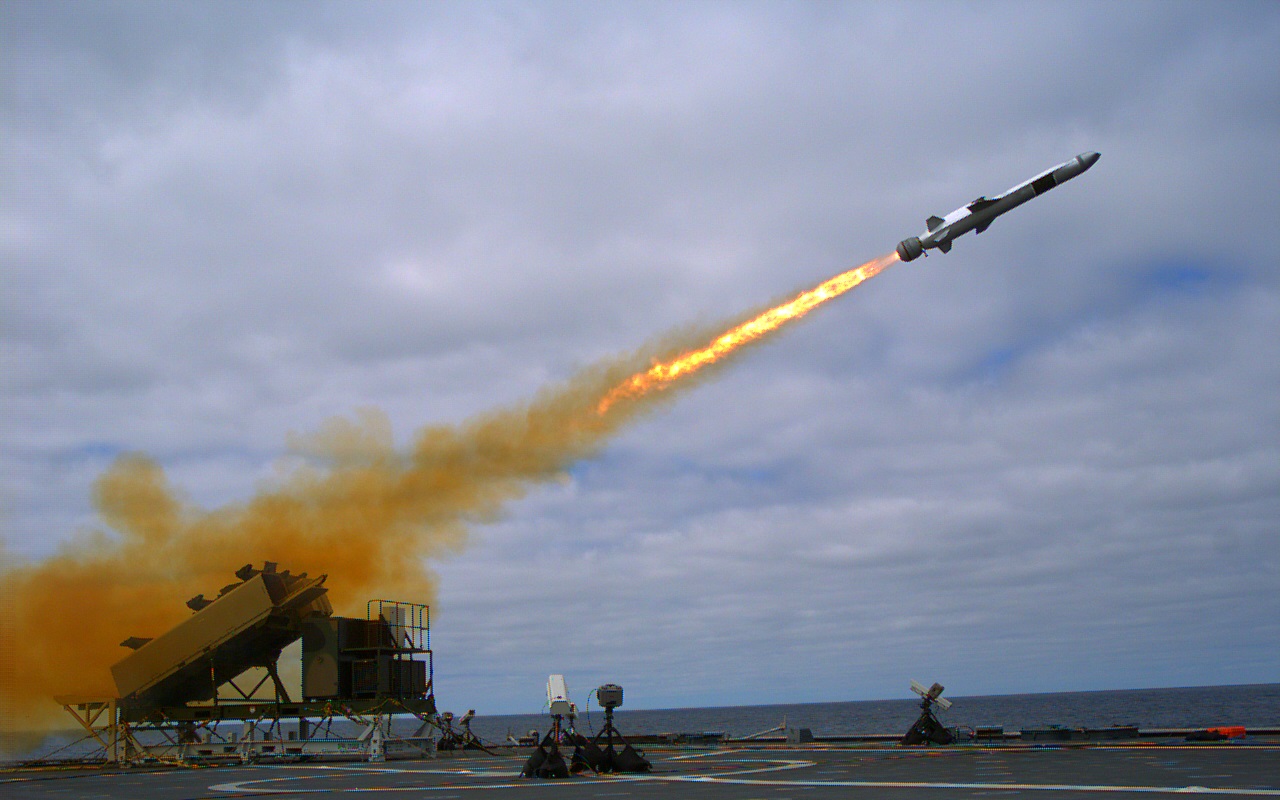LCS To Get Missiles for Next Deployment
12:01 p.m. EDT October 25, 2015
WASHINGTON — The US Navy’s push to increase the lethality of the littoral combat ship (LCS) is getting a major and somewhat unexpected boost with word that an over-the-horizon (OTH) surface-to-surface missile will be installed on-board the next LCSs to deploy.
Rear Adm. Pete Fanta, director of surface warfare at the Pentagon, issued a directive on Sept. 17 calling for the installation of an unspecified OTH missile aboard the Freedom and the Coronado, the next two LCSs scheduled for deployment. The Freedom is to deploy to the Western Pacific during the first quarter of calendar year 2016, while the Coronado is to follow in the second or third quarter.
“The objective is to install the OTH missile system aboard all in-service LCS deploying to forward operating stations starting in fiscal year 2016,” Fanta wrote in the directive, “as well as on all under-construction LCS prior to their commissioning ceremonies.”
The LCS has been without a surface-to-surface missile since the cancellation in 2010 of the Non-Line-of-Sight (NLOS) missile, a program managed by the US Army that would have provided LCS with a significant weapon. Ever since, the service has been searching for a suitable replacement. A shipboard launch system for the Hellfire missile is being developed for smaller targets, but that weapon is unable to inflict significant damage on larger ships -- a role the OTH is meant to fill.
An OTH weapon is to be included in the LCS frigate variant now under development. The Navy has issued a request for information to industry for the frigate missile, and a request for proposals is expected later this year, but no missile has yet been chosen.
Fanta’s directive does not mention a specific missile, but it’s understood from sources that the missiles for the initial installations will be the Boeing Harpoon and Kongsberg Naval Strike Missile (NSM).
The idea, sources confirmed, is to try out both kinds of missile on both LCS variants, each ship deploying with only one model of missile installed.
The Harpoon is a tried-and-true weapon that has armed most US warships since the late 1970s. It is a normally mounted in launch canisters, usually grouped in a quad pack. Most ships carry two quad packs, for a total of eight weapons – the maximum number of weapons per ship specified in Fanta’s directive. Boeing has been at work to improve the weapon, in particular to give it longer range.
The Norwegian-built NSM, by contrast, is not a US program of record and is not in service with any US platforms, although it is in service with the Norwegian Navy. It is the only naval strike missile to be fired from an LCS, however. In a simple demonstration test, a single missile box launcher was loaded aboard the Coronado and fired on Sept. 23, 2014. The launcher sat on a rudimentary platform exhausting over the ship’s flight deck, and the missile was not integrated into the Coronado’s combat system.
Fanta’s directive, in fact, notes that “full integration with the LCS combat system is not required. A stand-alone console or computer terminal capable of consummating an engagement is sufficient for initial fielding.”
The directive, to the Program Executive Officer for Littoral Combat Ships (PEO LCS) and Program Executive Officer for Integrated Warfare Systems (PEO IWS) at the Naval Sea Systems Command, calls for the installation of “the maximum number of missiles possible within the space, weight, power and cooling margins available. The initial design should be able to spiral to an eventual goal of eight missiles per ship.”
The missile system chosen, Fanta stipulated, “must be technologically mature with a demonstrated range.”
Fanta acknowledged in the directive that the missile installation on ships about to deploy is ahead of previous guidance, but noted the action is in line with moves to increase the lethality and survivability of the Navy’s small combatants.
The first priority for the new LCS frigate, he noted, is for an OTH surface-to-surface missile capability.
Numerous proposals have been provided by industry on how to fit missiles into the LCS designs. Lockheed Martin has offered vertical launch systems (VLS), usually in eight-cell groups, for the LCS 1 Freedom class, and such an installation is being provided on versions of the design approved for sale to Saudi Arabia.
Austal USA, builder of the LCS 2 Independence class all-aluminum variant, has also offered designs that include VLS.
Fanta, however, is said to prefer box launchers for LCS -- simpler, less costly and with less of an impact on a ship’s design. Drawbacks include the general inability to modify box launchers to accommodate improved or different missiles over the course of a ship’s service life.
The Freedom – the oldest LCS in service – is preparing for its second deployment to the western Pacific, where it will relieve the Fort Worth. The Coronado will be making the first deployment for the Independence class, which has been focusing on developing the mine-countermeasure mission module.
One element of the missile installation yet to be determined is how the shipboard system will be managed – either by the crew or the mission detachment that comes aboard to operate the modules.
The OTH system will be considered part of the surface warfare package, a Navy source said, and might also be carried when the ship is fitted with the anti-submarine warfare package. Out of the question, however, is its use when the mine countermeasure module is embarked. The greater weight of the mine module, the source said, precludes carrying the missiles.
It is also not clear what effect the directive will have on ships now under construction or set to enter service. The Milwaukee, third ship of the Freedom class, was accepted by the Navy on Oct. 16 and is to be formally commissioned Nov. 21 in a ceremony in her namesake city. The Jackson, third ship of the Independence class, was delivered to the Navy on Aug. 11 and is to be commissioned Dec. 5 in Gulfport, Mississippi.
More ships are nearing completion both at Fincantieri Marinette Marine, which builds the Freedom-class ships in Marinette, Wisconsin, and at Austal USA, building Independence-class ships in Mobile, Alabama.
http://www.defensenews.com/story/defense/naval/ships/2015/10/25/lcs-littoral-combat-ship-fanta-mission-module-surface-warfare-missile-harpoon-naval-strike-missile-kongsberg-norwegian-fort-worth-freedom-coronado-independence-navy/74477482/

